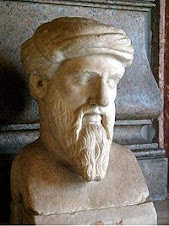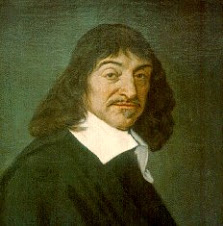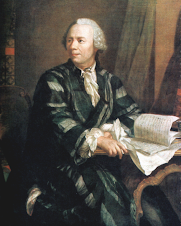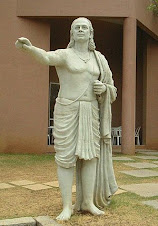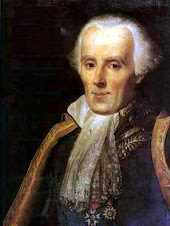Thursday, June 17, 2021
Friday, November 4, 2011
SIMPLE PUZZLES
PUZZLE 15
A two-digit number, read from left to right, is 4.5 times as large as the same number read from right to left. What is the number?
PUZZLE 16
Some ducks are marching across a path. There's a duck in front of two ducks, there's a duck behind two ducks, and there's a duck in the middle of two ducks.
What's the least number of ducks that there could have been?
SOLUTIONS
PUZZLE 15 : 18 and 81
PUZZLE 16 : 3 Ducks.
FOR MORE PUZZLES CLICK HERE
Wednesday, November 2, 2011
LAPLACE TRANSFORM
Introduction:
- The Laplace transform is named in honor of mathematician and astronomer Pierre-Simon Laplace, who used the transform in his work on probability theory.
- Like the Fourier transform, the Laplace transform is used for solving differential and integral equations.
- Laplace transform is a widely used integral transform.
- Laplace transform is just a shortcut for complex calculations.
Real Life Applications:
- The Laplace transform turns a complicated nth order differential equation to a corresponding nth degree polynomial.
- In physics and engineering, it is used for analysis of linear time-invariant systems such as electrical circuits, harmonic oscillators, optical devices, and mechanical systems.
- The Laplace transform is one of the most important equations in digital signal processing and electronics.
- In Nuclear physics, Laplace transform is used to get the correct form for radioactive decay.
- It has also been applied to the economic and managerial problems, and most recently, to Materials Requirement Planning (MRP)
- The Laplace transform reduces a linear differential equation to an algebraic equation, which can then be solved by the formal rules of algebra.FOR MORE APPLICATIONS CLICK HERE
Friday, October 14, 2011
Conformal Mapping
Geometric interpretation of a complex function.
If D is the domain of real-valued functions and u(x,y) and v(x,y) then the system of equations u = u(x,y) and v = v(x,y) describes a transformation (or mapping) from the x y - plane into the u v -plane, also called the w-plane.
Therefore, we consider the function w= f(z) = u(x,y) + i v (x,y)
to be a transformation (or mapping) from the set D in the z-plane onto the range R in the w-plane.
Conformal Mapping:
A function f: C → C is conformal at a point z₀ if and only if it is holomorphic and its derivative is everywhere non-zero on C.
i.e., if f is analytic at z₀ and f’(z₀) ≠ 0
Isogonal Mapping:
An isogonal mapping is a transformation w = f (z) that preserves the magnitudes of local angles, but not their orientation.
Standard Transformations:
• Translation
- Maps of the form z → z + k, where k є C
• Magnification and rotation
- Maps of the form z → k z , where k є C
- Maps of the form z → 1 / z
Transformation w = a z
Let w = a z, where a ≠ 0
If a = │a│ e^(i α) and, z = │z │ e^(i θ), then
w = │a│ │z│ e^i(θ + α )
The image of z is obtained by rotating the vector z through the angle α and magnifying or contracting the length of z by the factor │a│.
Thus the transformation w = a z is referred to as a rotation or magnification.
Example 1:
Find the image of the region y > 1 under the map w = ( 1 – i ) z
Solution:
Let w = u + i v ; z = x + i y
Given w = ( 1 – i ) z
i.e., z = 1/2 ( 1 + i) w [ since ( 1 – i ) ( 1 + i) = 2]
i.e., x + i y = 1/2 ( 1 + i) (u + i v )
i.e., x = (u- v )/2 ; y = (u+v)/2
Hence the region y >1 is mapped on the region u + v > 2 in w –plane.
Determine the region R of the w plane into which the triangular region D enclosed by the lines
x = 0, y = 0, x + y = 3 is transformed under the transformation w = 2z.
Solution:
Let w = u +i v; z = x + i y
Given, w =2 z
i.e., u +i v = 2 (x + i y)
i.e., u = 2 x ; v = 2 y
When x = 0, u = 0
The line x = 0 is transformed into the line u = 0 in the w – plane.
When y = 0, v = 0
The line y = 0 is transformed into the line v = 0 in the w – plane.
When x + y = 3 , we get
u/2 + v/2 = 3
i.e., u + v = 6
The line x + y = 3 is transformed into the line u + v = 6 in the w – plane.
If a = │a│ e^(i α) and, z = │z │ e^(i θ), then
w = │a│ │z│ e^i(θ + α )
The image of z is obtained by rotating the vector z through the angle α and magnifying or contracting the length of z by the factor │a│.
Thus the transformation w = a z is referred to as a rotation or magnification.
Example 1:
Find the image of the region y > 1 under the map w = ( 1 – i ) z
Solution:
Let w = u + i v ; z = x + i y
Given w = ( 1 – i ) z
i.e., z = 1/2 ( 1 + i) w [ since ( 1 – i ) ( 1 + i) = 2]
i.e., x + i y = 1/2 ( 1 + i) (u + i v )
i.e., x = (u- v )/2 ; y = (u+v)/2
Hence the region y >1 is mapped on the region u + v > 2 in w –plane.
Determine the region R of the w plane into which the triangular region D enclosed by the lines
x = 0, y = 0, x + y = 3 is transformed under the transformation w = 2z.
Solution:
Let w = u +i v; z = x + i y
Given, w =2 z
i.e., u +i v = 2 (x + i y)
i.e., u = 2 x ; v = 2 y
When x = 0, u = 0
The line x = 0 is transformed into the line u = 0 in the w – plane.
When y = 0, v = 0
The line y = 0 is transformed into the line v = 0 in the w – plane.
When x + y = 3 , we get
u/2 + v/2 = 3
i.e., u + v = 6
The line x + y = 3 is transformed into the line u + v = 6 in the w – plane.
Subscribe to:
Posts (Atom)





